Schaller’s mouthbrooder - Betta schalleri
Scientific name: Betta schalleri
Common name: Schaller’s mouthbrooder
Family: Osphronemidae
Usual size in fish tanks: 4 - 5 cm (1.57 - 1.97 inch)
014
Recommended pH range for the species: 4.6 - 5.8
Recommended water hardness (dGH): 2 - 10°N (35.71 - 178.57ppm)
0°C 32°F30°C 86°F
Recommended temperature: 24 - 26 °C (75.2 - 78.8°F)
The way how these fish reproduce: Spawning
Where the species comes from: South America
Temperament to its own species: peaceful to females
Temperament toward other fish species: peaceful
Usual place in the tank: Top levels
Origin
Schallers-mouthbrooder is an Asian betta species that originates from Indonesia and Banka where they inhabit the flood plains and small vegetated waterways.
Short description
This species is one of the rarer Betta species to be found in the aquarium trade so if you are lucky enough to get hold of some specimens they may demand higher prices. They belong to the family of Osphronemidae along with many other species from this family. Adult specimens will only reach an adult size of just under 2 inches making them ideal for the smaller aquariums but if kept in a group then allow for this with the water volume. Sadly too many Betta are kept in small containers which is cruel to the fish and a very bad practice. Their main body colouration is a grey or reddish brown main colour although the lighting in the aquarium may distort this and on the edges of their scales there will be a green tinge. They will also display a vertical dark barring on their head which runs through the eye. They are classed as a peaceful species and will do well with other tank mates of a similar size and who require the same water parameters but the males will display aggression during the spawning periods.
Lifespan
If cared for correctly Schallers-mouthbrooder should have an average lifespan of at least 3-5 years.
General care
Betta schalleri can be housed in a small aquarium if kept as as single pair, a 10 gallon tank is ideal however if you are keeping a group of these fish then you will require a larger aquarium of up to 30 gallons. A tight fitting lid will need to be used and keep the water level a couple of inches lower than the top of the aquarium. The water temperature should be set between 24 -26°C (76-79°F) and the pH should range between 4.6-5.8. These fish are quite hardy but they do require high water quality and should never be added to an immature tank setup.
Feeding
These are not a difficult fish to feed and ig healthy will have a voracious appetite. It should be remembered that they only have small mouths and stomachs so the size of the food should relate to this. Use a quality commercial flake or small pellets for the staple diet and this should be varied with treats of live or frozen foods such as brine shrimp or bloodworms.
Sexing
Mature males will have a broader head shape and develop a caudal spike on their fin. Their pelvic fins will also elongate as they mature.
Breeding
Like most of the Betta species, Schallers mouthbrooders are a paternal brooder with the male taking on all parental responsibilities. It is best to use a separate breeding tank and take care when introducing the female. If too much aggression is shown by the male split the pair and try again in 2-3 weeks. The female will mostly encourage the spawning and once the eggs have been deposited by the female and fertilised the male will scoop them up for brooding. At this stage it is advised to remove the female to prevent her getting harassed by the male. Incubation normally takes 8-10 days and when the fry are released then can be fed on newly hatched brine shrimp or Infusoria. Remove the male once the fry are free swimming and carefully perform small water changes in the fry tank on a daily basis to keep the water quality as high as possible. It is best to give the fry 3-4 small meals per day rather than a couple of larger meals.
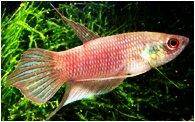
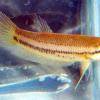 Akar
Akar 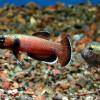 Whiteseam
Whiteseam 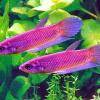 Giant
Giant 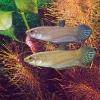 Betta
Betta 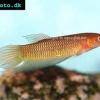 Slender
Slender 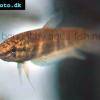 Betta
Betta 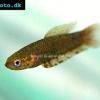 Brown’s
Brown’s 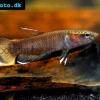 Snakehead
Snakehead 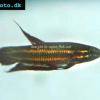 Wine
Wine 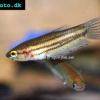 Edith’s
Edith’s 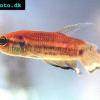 Blue
Blue 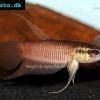 Betta
Betta 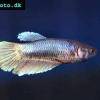 Peaceful
Peaceful 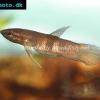 Kapaus
Kapaus 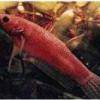 Eyespot
Eyespot 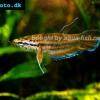 Spotted
Spotted 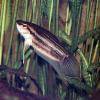 Forest
Forest 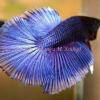 Siamese
Siamese 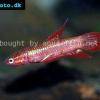 Chukai
Chukai 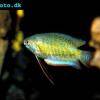 Banded
Banded 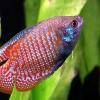 Dwarf
Dwarf 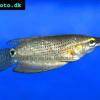 Frail
Frail 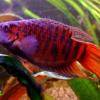 Paradise
Paradise 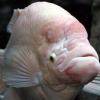 Giant
Giant 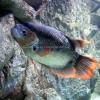 Giant
Giant 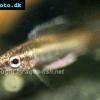 Licorice
Licorice 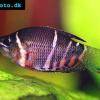 Chocolate
Chocolate 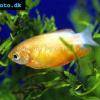 Honey
Honey 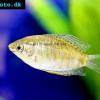 Thick
Thick 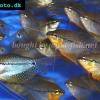 Pearl
Pearl 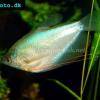 Moonlight
Moonlight 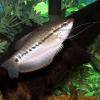 Snakeskin
Snakeskin 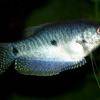 Blue
Blue